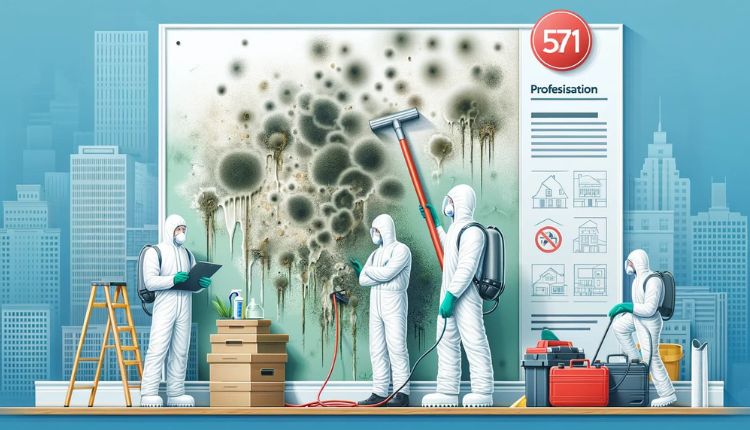What Causes Mold in Homes?
Did you know that fungal growth in residential settings is mainly driven by moisture? However, many ways exist to manage mold growth and maintain healthy indoor air quality proactively. For instance, you can start by ensuring your windows are correctly sealed, fixing leaking pipes, and repairing roof damage. Additionally, routine domestic tasks such as taking a shower, cooking, and doing laundry can also contribute to elevated indoor humidity levels, which makes it essential to maintain good ventilation. By taking these steps, you can prevent mold spores from rooting and increasing and avoid mold problems in your home. And if you ever need professional help, services like mold remediation in New Jersey can help you deal with mold issues effectively.
Health Risks Associated with Mold
The potential health impacts of mold exposure are broad and can vary depending on individual sensitivity. For some, inhaling or contacting mold spores may trigger allergic reactions, presenting symptoms like sneezing, skin rashes, and red eyes. Those with asthma or respiratory conditions may worsen their symptoms due to mold exposure. Moreover, long-term exposure to certain toxic mold varieties, like Stachybotrys chartarum (black mold), can pose more severe health risks, including chronic lung illnesses. It is paramount to address mold concerns promptly to safeguard the health of all occupants.
Detecting Mold in Your Home
Suspicion of mold infestation often begins with a visible inspection; mold can appear as blotchy spots across walls or ceilings and may come in a spectrum of colors from black to green. These discolorations can often be accompanied by a distinctive musty odor, indicating mold growth within walls, under carpets, or in other obscured places. Persistent symptoms among residents, such as coughing or wheezing, can also serve as a cue for hidden mold. Homeowners who discover or suspect molds are strongly advised to seek professional inspection services, as experts are equipped with the tools to detect and assess the scope of mold infestations accurately.
Preventative Measures to Keep Mold at Bay
Moisture control is crucial to prevent mold effectively. Dehumidifiers, especially in naturally humid climates or seasons, assist in keeping indoor moisture levels in check. Ventilation is just as important, with exhaust fans in kitchens and bathrooms helping to propel moisture-laden air out of the home. Home maintenance plays a significant preventative role; for instance, ensuring that gutters are clean and direct water away from the foundation can mitigate against water intrusion. Similarly, mold can be avoided by acting quickly to remedy any indications of water damage.
Effective Cleaning Solutions for Mold Removal
A small-scale mold problem, such as that in a bathroom, may be tackled with cleaning solutions commonly found in homes, like diluted bleach or specialized mold and mildew removers. They recommend that homeowners clean visible mold and rectify any underlying water problems to prevent its reappearance. When confronting more significant or entrenched mold problems, the assistance of mold remediation professionals becomes essential.
The Science Behind Mold Remediation
The mold remediation process goes beyond simple clean-up; it’s a systematic approach to mold abatement that helps ensure mold does not return. Professionals in this field are equipped with the tools to isolate and contain the affected area, preventing the spread of spores. Specialized air filtration devices such as HEPA filters capture airborne mold spores, while affected materials are often removed and replaced to avoid recurrence. The application of antimicrobials and biocides may follow to eradicate any remaining mold and inhibit new growth.
Long-Term Mold Management Strategies
After remediation, ongoing vigilance is critical to managing a home’s mold situation. It includes periodic checks for any signs of moisture intrusion, maintaining adequate airflow in damp areas, and routinely inspecting potential problem zones such as basements and attics. Educating all occupants on the importance of maintaining a dry and ventilated environment can significantly contribute to preventing future mold problems. Changing air filters, cleaning HVAC systems, and promptly drying damp areas are simple yet effective long-term strategies.
Understanding Professional Mold Remediation Services
Dealing with extensive mold infestations is best left to the experts. A professional service will start with a comprehensive inspection, identifying all areas affected by mold, before moving on to containment and filtration. Remediation specialists are trained to handle toxic mold safely, using appropriate protective gear and following protocols that protect the building’s occupants. The CDC’s guidance on mold and health outlines the importance of professional remediation services in safeguarding health, particularly in cases of significant infestation.

